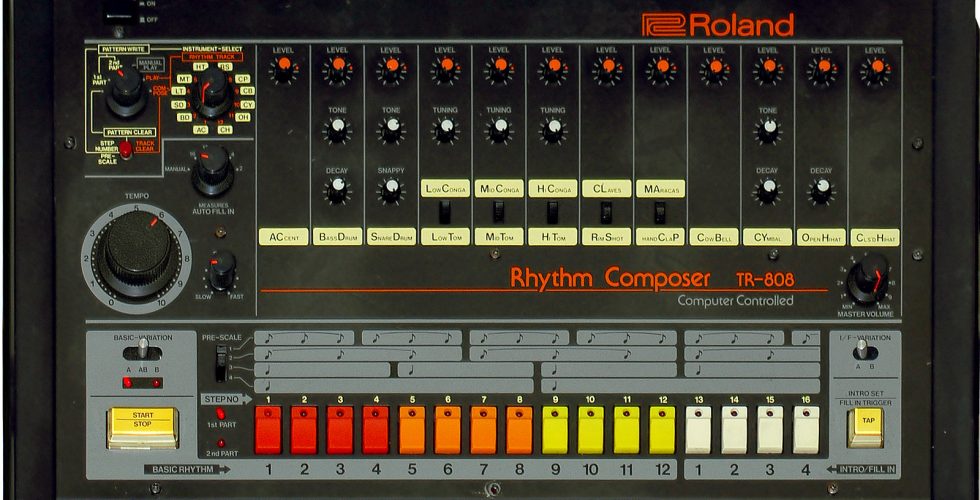Apple Music is set to release an exclusive subscribers-only documentary and album to pay homage to one of the most connecting, ubiquitous and quietly mystifying machines in all of the music industry: the Roland TR-808 drum machine. From Phil Collins to Pharrell to Kanye to Daft Punk, musicians and producers have been lining up behind the ever-holy Roland machine. They will all agree: there is some intangible quality buried within a Roland 808 that cannot be reproduced, replicated or imposed by any other machine.
The 808 started to make its way into music production in the early 1980s. Back then, it was engineered to help studio musicians create demos. Between 1980 and 1983, 12,000 units of the Roland TR-808 were made. By 1984, however, the Linn LM-1 hit the shelves with notably superior sound and sampling abilities than the Roland. So, for those that could afford it, the Linn LM-1 became the market leader in programmable drum machines.
But the Roland TR-808 was cheaper, $1,195 compared to the $5,000 Linn LM-1. And the Roland TR-808, though lesser in quality, could produce more distinctive same low-frequency sounds: the deep bass kick drum, the small handclap sounds, the ticking snare, hi-hats, and spacey cowbells. These crucial differences kept the popularity of the Roland TR-808 among hip hop artists for several years after it ceased production.
The TR-808 and its 1983 successor, the TR-909, had a 28-year journey to fame, one that wandered through the subterranean of nearly every music genre: electro, techno, pop, and regional hip-hop. It is the versatility and uniqueness of the machine’s sound that has allowed for this chameleon-like activity. The machine can play single songs of up to 768 measures in length, or, rather, it can play up to 12 songs of 64 measures in length. The TR-808 can also divide each quarter note into 3,4,6, or 8 steps. What does this mean in layman’s terms? That the TR-808 can perform extremely complex rhythms that even the best drummers cannot accurately replicate. And its the machine’s kick-drum, and it’s gloriously artificial handclaps, and the echo-laden claves that create allow for intricate grooviness. On an almost immeasurable amount of pop songs, you can find the friendly TR-808.
Take Marvin Gaye’s “Sexual Healing” and give it another listen.
Or there is Afrika Bambaataa’s Planet Rock. The song samples a Kraftwerk’s “Trans-Europe Express” over the TR-808 kicks and hi-hats.
Unsurprisingly, new waves bands are 808-users too. Like here, where David Byrne is lying to you. That’s not a tape playing the background mix to “Psycho Killer.” It’s Chris Frantz, somewhere buried in the back, fiddling with an 808.
Any of the remaining 808s on the market today sell for upwards of $2,000. It’s a low-stock, high demand economy for something no other musical machine can produce. It’s got the industry and soul longevity in tandem with the versatility to travel from genre to genre that keep producers constantly coming back to the 808. Egyptian Lover, the L.A. producer behind the L.A. dance and rap scene uprise in the 1980s, swears by the perpetual grandeur that the machine brings. Lil Wayne on ‘Nymphos’ describes similar feelings about the 808 bass, spitting “Make the control room boom like an 808.” Outkast’s Big Boi does the same, with ” But I know ya’ll wanted that 808/Can you feel that B-A-S-S bass?” on 2003’s ‘Way You Move.’ Kanye mentioned his use of the TR-808 in the very title of his 2008 “808s and Heartbreaks” — though it was later revealed that he was actually using both the TR-808 and TR-909 for most of the album’s production.
Apple Music’s upcoming release of the documentary, “808” is something to subscribe for. It will draw you into the deep, most buried parts of the machine’s history from a surprising range of greats. The trailer can be found below.

